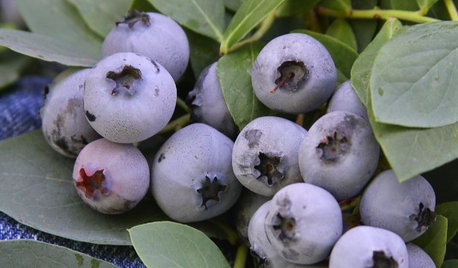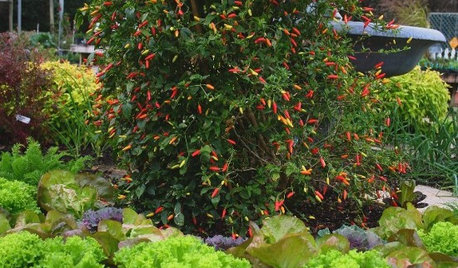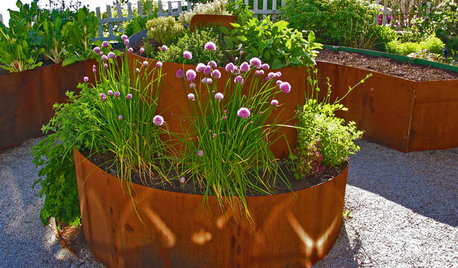Your favorite, easy, edible fruits/nuts for Wisconsin?
arugula
13 years ago
Related Stories

FARM YOUR YARD10 Easy Edibles to Grow in Containers
These herbs, vegetables and fruits are just as happy in a pot as they are in the ground
Full Story
EDIBLE GARDENSHow to Grow 10 Favorite Fruit Trees at Home
Plant a mini orchard in fall, winter or early spring to enjoy fresh-off-the-tree fruit the following year
Full Story
GARDENING GUIDES10 Easy Edibles for First-Time Gardeners
Focus on these beginner-friendly vegetables, herbs, beans and salad greens to start a home farm with little fuss
Full Story
GARDENING GUIDES15 Favorites for Your Summer Edible Garden
Get your summer garden off to a good start with these popular fruits and vegetables
Full Story
EDIBLE GARDENS6 Summer Edibles That Can Really Take the Heat
When garden temperatures soar, these herbs and vegetables rise to the challenge
Full Story
EDIBLE GARDENSHow to Add an Apple Tree to Your Edible Garden
Readily available, beautiful and fragrant, apple trees offer four-season interest along with crisp, juicy fruit
Full Story
GARDENING GUIDESGreat Design Plant: Grow Blueberries for Their Fruit and More
Eastern gardeners should consider growing blueberry plants for their delicious fruits, bee-friendly spring blooms and brilliant fall foliage
Full Story
FRONT YARD IDEAS10 Ideas for a Front-Yard Edible Garden Your Neighbors Will Love
Choosing attractive, well-mannered plants and sharing the bounty will go a long way toward keeping the peace
Full Story
URBAN GARDENSContainers Make Growing Edibles a Cinch
If life hands you a lack of land, grow lemons — with a few basics, you can proudly reap the fruits, veggies and herbs of your labor
Full Story
FARM YOUR YARDHow to Grow Vegetables in Containers
Get glorious vegetables and fruits on your patio with a pro’s guidance — including his personal recipe for potting mix
Full StorySponsored






heartsease
arugulaOriginal Author
Related Professionals
New Bedford Landscape Architects & Landscape Designers · Owings Mills Landscape Architects & Landscape Designers · Billerica Landscape Contractors · Peabody Landscape Contractors · Pelham Landscape Contractors · Dudley Landscape Contractors · East Lake-Orient Park Landscape Contractors · Gaithersburg Landscape Contractors · Ridgewood Landscape Contractors · Wheat Ridge Landscape Contractors · Yuba City Landscape Contractors · Chicago Ridge Landscape Contractors · Oxon Hill Landscape Contractors · Homer Glen Carpenters · Mission Viejo Carpenterswirosarian_z4b_WI
tsugajunkie z5 SE WI ♱
heartsease
wirosarian_z4b_WI
mrswaz
northwoodswis4
leftwood
heartsease
arugulaOriginal Author
wirosarian_z4b_WI
leftwood
athenainwi
theresa2
leftwood
heartsease
arugulaOriginal Author
athenainwi
wirosarian_z4b_WI
theresa2
athenainwi
heartsease
leftwood